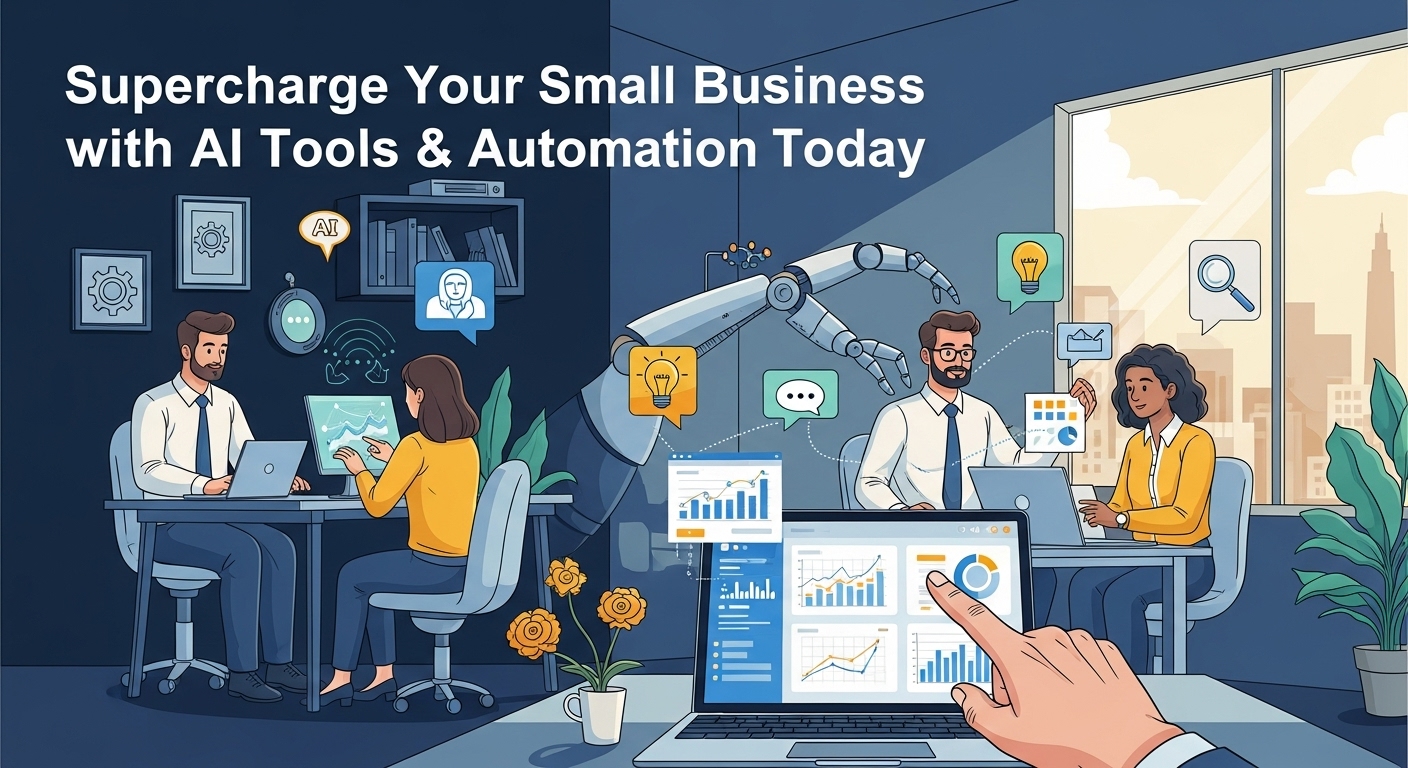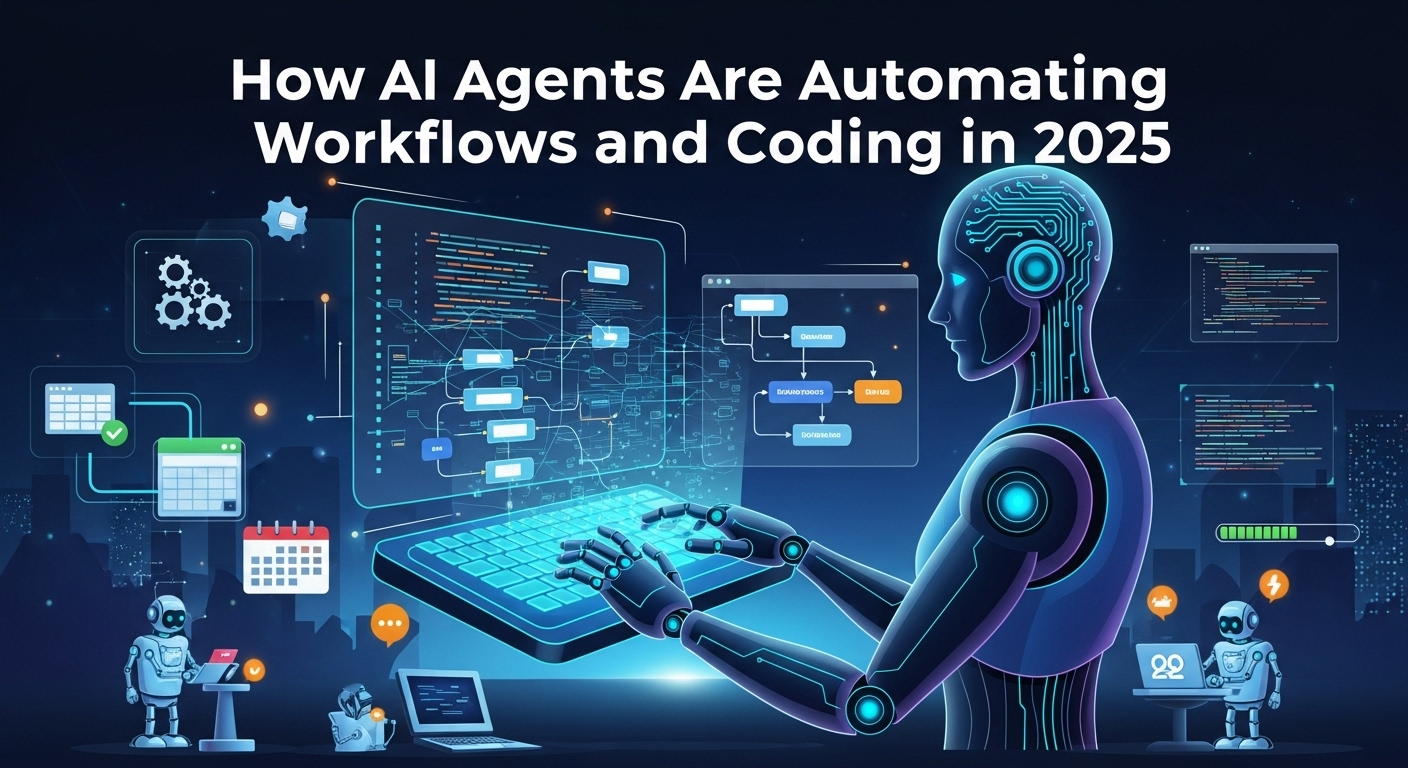The Secret Weapon Every Small Business Needs: AI Tools & Automation
Running a small business is a constant juggling act. You’re the CEO, the marketer, the customer service rep, and often, the janitor. With a never-ending to-do list and limited resources, how can you possibly compete with larger companies? The answer isn’t working harder; it’s working smarter. Welcome to the world of AI tools & automation, the game-changing force that’s leveling the playing field for entrepreneurs everywhere.
You might hear ‘Artificial Intelligence’ and picture complex robots from a sci-fi movie, but the reality is much more practical and accessible. Today, AI is powering simple, affordable tools that can automate repetitive tasks, provide deep insights into your business, and free up your most valuable asset: your time. This guide will demystify AI and show you exactly how you can harness its power to drive real growth for your small business.
What Exactly Are AI Tools & Automation?
Before we dive into the exciting applications, let’s break down the jargon. Understanding the fundamentals is key to seeing the potential for your own operations. These aren’t just buzzwords; they represent a fundamental shift in how business gets done.
Demystifying AI for the Everyday Entrepreneur
At its core, Artificial Intelligence is about creating computer systems that can perform tasks that typically require human intelligence. This includes things like learning from data, recognizing patterns, understanding language, and making decisions. For a small business, this doesn’t mean hiring a robot. It means using software that can:
- Write a social media post based on a simple prompt.
- Analyze customer feedback to identify common issues.
- Predict which sales leads are most likely to convert.
- Organize your expenses automatically.
Think of AI as a brilliant, incredibly fast assistant who can handle the tedious, data-heavy tasks, allowing you to focus on strategy, creativity, and building relationships.
The Power of Automation
Automation is the ‘doing’ part of the equation. It’s the process of setting up technology to operate tasks and processes automatically, without human intervention. When you combine it with AI, you get intelligent automation. For example, a simple automation might be an auto-reply email. An AI-powered automation, however, could be a chatbot that understands a customer’s question, pulls information from your knowledge base, and provides a tailored, helpful answer in real-time, 24/7.
The goal of using ai tools & automation is to create seamless workflows that save time, reduce errors, and improve consistency across your business.
Key Areas Where AI is a Game-Changer for Small Businesses
The true power of AI lies in its versatility. It can be applied to virtually every facet of your business, from finding new customers to keeping your existing ones happy. Let’s explore some of the most impactful areas.
Marketing and Sales on Autopilot
Marketing is crucial, but it can be incredibly time-consuming. AI tools can take over many of the repetitive tasks, allowing you to focus on the big picture.
- Content Creation: AI writing assistants like Jasper or Copy.ai can help you brainstorm blog ideas, write ad copy, draft emails, and create social media captions in a fraction of the time.
- Email Marketing: Tools like Mailchimp now use AI to help you optimize send times, personalize subject lines, and even predict which customers are most likely to engage with your campaigns.
- Social Media Management: Platforms like Buffer or Hootsuite use AI to analyze your audience’s activity and suggest the best times to post for maximum engagement.
- Lead Scoring: AI can analyze a lead’s behavior (website visits, email opens, etc.) to score their interest level, helping your sales team prioritize who to contact first.
Revolutionizing Customer Service
Exceptional customer service can be a major differentiator for a small business. AI ensures you can provide prompt, helpful support without needing a massive team.
- 24/7 Support with Chatbots: AI-powered chatbots can handle a huge volume of common customer inquiries instantly, any time of day. They can answer questions about shipping, process returns, or guide users to the right information, freeing up your human agents for more complex issues.
- Smarter Helpdesks: Modern helpdesk software uses AI to automatically categorize support tickets, route them to the right person, and suggest template responses, dramatically speeding up resolution times.
- Sentiment Analysis: AI tools can scan customer emails, reviews, and social media comments to gauge sentiment. This helps you quickly identify unhappy customers and proactively address their concerns before they escalate.
Streamlining Operations and Administration
This is where automation truly shines. The administrative ‘back office’ tasks are essential but rarely contribute directly to revenue. AI can put them on cruise control.
- Financial Management: Tools like QuickBooks and Dext use AI to automatically scan receipts, categorize expenses, and reconcile accounts, saving you hours of painful bookkeeping.
- Project Management: AI-enhanced project management tools can help predict project timelines, identify potential bottlenecks, and automatically assign tasks based on team member availability and skills.
- Scheduling: Forget the endless back-and-forth emails. AI scheduling assistants like Calendly integrate with your calendar and allow clients to book meetings with you automatically based on your real-time availability.
How to Get Started with AI Tools & Automation
Feeling overwhelmed? That’s normal. The key is to start small and build momentum. You don’t need to transform your entire business overnight. Here’s a simple, three-step approach.
Step 1: Identify Your Biggest Bottlenecks
Before you look at any tools, look at your own processes. Where are you spending the most time on repetitive, low-value tasks? What part of your business feels the most chaotic or inefficient? Is it responding to customer emails? Is it managing your social media? Is it bookkeeping? Make a list of your top 3-5 pain points. This is your starting line.
Step 2: Start Small and Scale Up
Don’t try to implement five new AI systems at once. Pick one bottleneck from your list and find a specific tool to solve it. For example, if scheduling meetings is a huge time-sink, sign up for a free or low-cost Calendly account. Spend a week or two getting comfortable with it. See the immediate time savings. This small win will build your confidence and demonstrate the value of automation to you and your team.
Step 3: Train Your Team and Embrace Change
Technology is only as good as the people using it. As you introduce new ai tools & automation, make sure to communicate the ‘why’ to your team. Frame it as a way to eliminate boring work and free them up for more interesting, high-impact projects. Provide training, be open to feedback, and create a culture that embraces experimentation and continuous improvement.
The Future is Automated: Your Next Steps
The rise of accessible AI is not a fleeting trend; it’s the new standard for efficient business operations. For small businesses, this is an unprecedented opportunity to punch above their weight, operate with the efficiency of a much larger organization, and deliver exceptional experiences to their customers. By automating the mundane, you unlock your potential to focus on innovation, growth, and the human connections that build a lasting brand.
Your journey with ai tools & automation starts today. Pick one area of your business, just one, that could benefit from a little intelligent help. Research a tool, sign up for a free trial, and see what happens. The biggest mistake you can make is waiting for the perfect moment. The perfect moment is now. What’s the first task you’re going to automate?


